The purpose of lubricating gears is as follows:
1. Promote sliding between teeth to reduce the coefficient of friction μ.
2. Limit the temperature rise caused by rolling and sliding friction.
To avoid difficulties such as tooth wear and premature failure, the correct lubricant must be chosen.
13.1 Methods of Lubrication
There are three gear lubrication methods in general use:
(1) Grease lubrication.
(2) Splash lubrication (oil bath method).
(3) Forced oil circulation lubrication.
There is no single best lubricant and method. Choice depends upon tangential speed(m/s) and rotating speed(rpm).
At low speed, grease lubrication is a good choice. For medium and high speeds, splash lubrication and forced oil circulation lubrication are more appropriate, but there are exceptions. Sometimes, for maintenance reasons, a grease lubricant is used even with high speed.
Table 13.1 presents lubricants, methods and their applicable
ranges of speed.
Grease lubrication can be applied in low speed / low load applications, however, it is important to apply grease periodically, especially for gears of the open-type usage. Since lubricants diminish or become depleted in the long term, periodic checks for oil change or refilling is necessary. Usage of lubricants under improper conditions cause damage to gear teeth. When using gears at high speed / heavy load, or when using easily worn gears such as
worm gears
or screw gears, care should be taken in selecting the right type of lubricant; quantity and methods. The proper selection of lubricant is especially important.
Table13.1-1 Ranges of tangential speed (m-s) for
spur gears
and
bevel gears
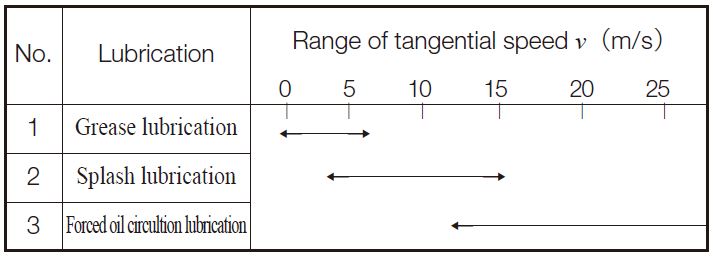
Table13.1-2 Ranges of sliding speed (m-s) for worm wheels
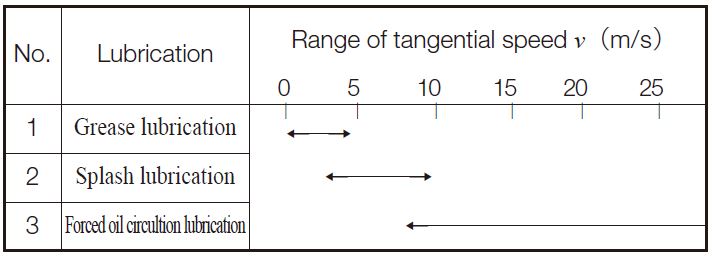
The following is a brief discussion of the three lubrication methods.
(1) Grease Lubrication
Grease lubrication is suitable for any gear system that is open or enclosed, so long as it runs at low speed. There are three major points regarding grease:
– Choosing a lubricant with suitable cone penetration.
A lubricant with good fluidity is especially effective in an enclosed system.
– Not suitable for use under high load and continuous operation.
The cooling effect of grease is not as good as lubricating oil. So it may become a problem with temperature rise under high load and continuous operating conditions.
– Proper quantity of grease
There must be sufficient grease to do the job. However, too much grease can be harmful, particularly in an enclosed system. Excess grease will cause agitation, viscous drag and result in power loss.
(2) Splash Lubrication (Oil Bath Method)
Splash lubrication is used with an enclosed system. The rotating gears splash lubricant onto the gear system and bearings. It needs at least 3m/s tangential speed to be effective. However, splash lubrication has several problems, two of them being oil level and temperature limitation.
1. Oil level
There will be excess agitation loss if the oil level is too high. On the other hand, there will not be effective lubrication or ability to cool the gears if the level is too low. Table 13.2 shows guide lines for proper oil level. Also, the oil level during operation must be monitored, as contrasted with the static level, in that the oil level will drop when the gears are in motion. This problem may be countered by raising the static level of lubricant in an oil pan.
2. Temperature limitation
The temperature of a gear system may rise because of friction loss due to gears, bearings and lubricant agitation. Rising temperature may cause one or more of the following problems:
– Lower viscosity of lubricant
– Accelerated degradation of lubricant
– Deformation of housing, gears and shafts
– Decreased backlash
New high-performance lubricants can withstand up to 80 C deg – 90 C deg.
This temperature can be regarded as the limit. If the lubricant’s temperature is expected to exceed this limit, cooling fins should be added to the gear box, or a cooling fan incorporated into the system.
Table 13.2 Adequate oil level

h = Tooth depth, b = Facewidth, d2 = Reference diameter of worm wheel, d1 = Reference diameter of worm
(3) Forced Oil Circulation Lubrication
Forced oil circulation lubrication applies lubricant to the contact portion of the teeth by means of an oil pump. There are drop, spray and oil mist methods of application.
– Drop Method
An oil pump is used to suck-up the lubricant and then directly drop it on the contact portion of the gears via a delivery pipe.
– Spray Method
An oil pump is used to spray the lubricant directly on the contact area of the gears.
– Oil Mist Method
Lubricant is mixed with compressed air to form an oil mist that is sprayed against the contact region of the gears. It is especially suitable for high-speed gearing.
Oil tank, pump, filter, piping and other devices are needed in the forced oil lubrication system. Therefore, it is used only for special high-speed or large gear box applications.
By filtering and cooling the circulating lubricant, the right viscosity and cleanliness can be maintained. This is considered to be the best way to lubricate gears.
13.2 Gear Lubricants
An oil film must be formed at the contact surface of the teeth to minimize friction and to prevent dry metal-to-metal contact. The lubricant should have the properties listed in Table 13.3.
Table 13.3 The properties that lubricant should possess
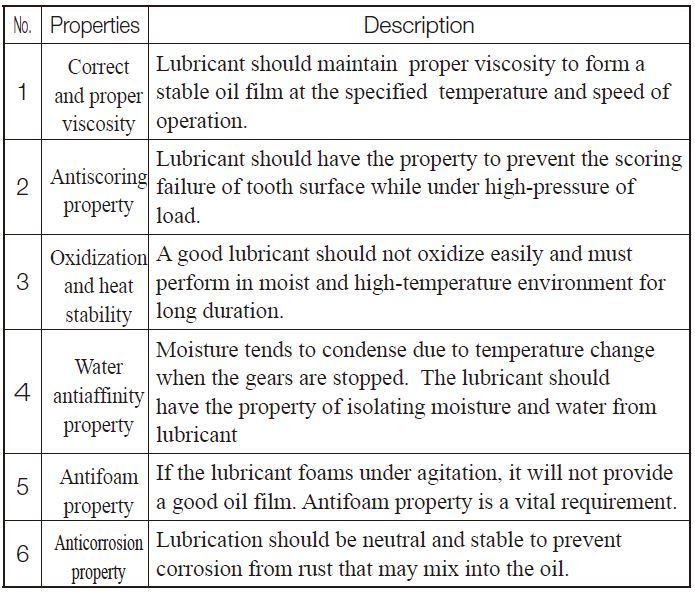
(1) Viscosity of Lubricant
The correct viscosity is the most important consideration in choosing a proper lubricant. The viscosity grade of industrial lubricant is regulated in JIS K 2001. Table 13.4 expresses ISO viscosity grade of industrial lubricants.
Table13.4 ISO viscosity grade of industrial lubricant ( JIS K 2001 )
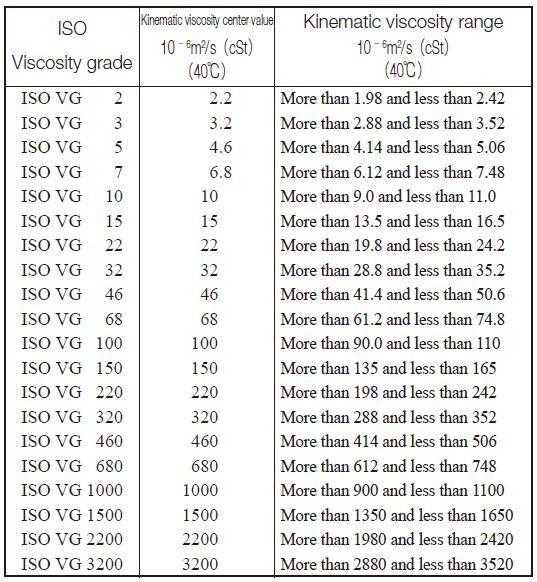
(2) Selection of Lubricant
Gear oils are categorized by usage: 2 types for industrial use, 3 types for automobile use, and also classified by viscosity grade.
(Table 13.5 – created from the data in JIS K 2219 – 1993: Gear Oils Standards.)
Table 13.5 Types of Gear Oils and the Usage
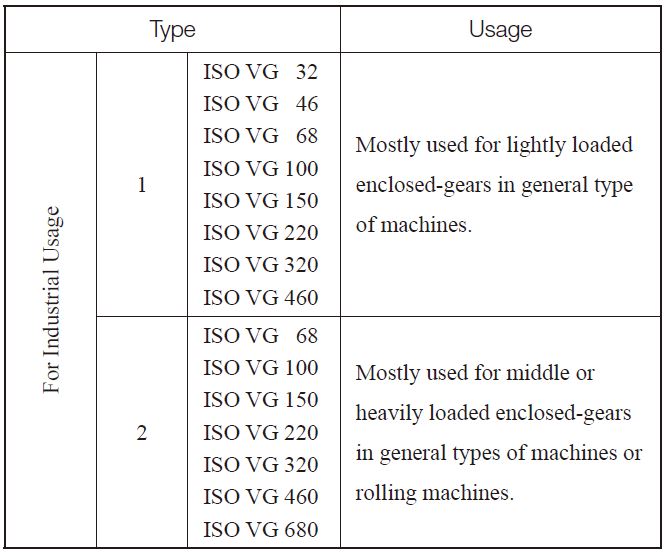
It is practical to select a lubricant by following the information in a catalog, a technical manual or information from the web site of the oil manufacturer, as well as following the JIS, JGMA and AGMA standards. Table 13.6 shows the proper viscosity for enclosed-gears, recommended by the oil manufacturer.
Table 13.6 Recommended Viscosity for Enclosed Gears
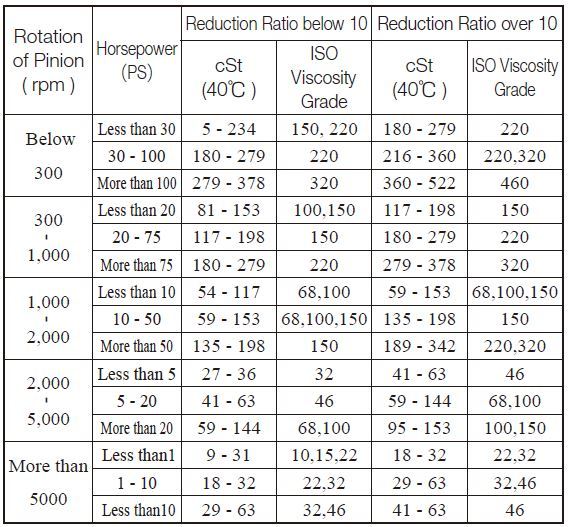
NOTE 1.Applicable for spur gears,
helical gears
, bevel gears and spiral bevel gears where the working temperature (oil temperature) conditions should be between 10 and 50 C deg.
NOTE 2.Circulating lubrication or splash lubrication is applied.
After making a decision about which grade of viscosity to select, taking into consideration the usage (for spur gear, worm gear pair etc.) and usage conditions (dimensions of mechanical equipment, ambient temperature etc.), then choose the appropriate lubricant.
Table 13.7 List of a few industrial oils from representative oil manufacturers
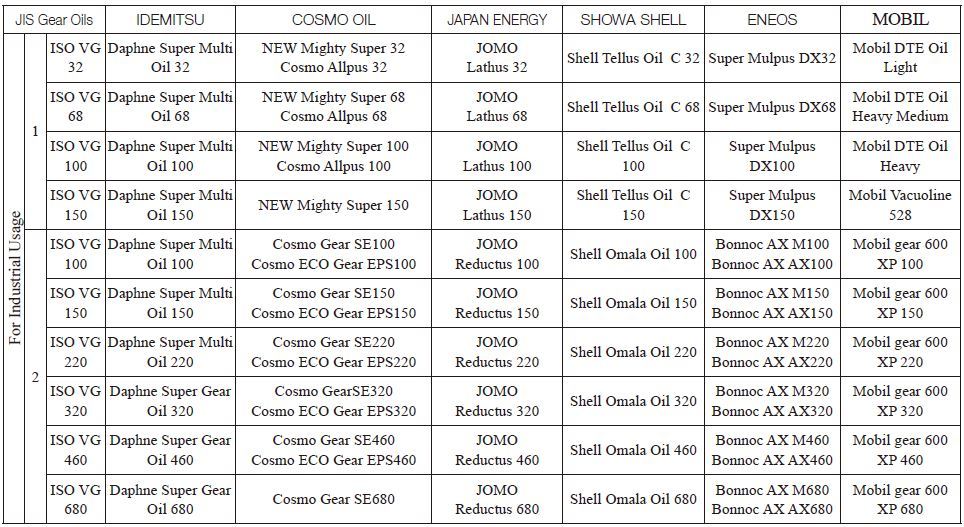
(3) Selection of Lubricants for the Worm Gear Pair
After selection of the proper viscosity in accordance with usage (applications of spur gears, worm gears, etc.) and the conditions (size of the device used in, ambient temperature etc) check the brand of lubricants from product information offered by oil manufacturers.
Table 13.8 indicates reference values for proper viscosity recommended in accordance with strength calculations (JGMA405-01(1976)). Table 13.9 lists some of the representative lubricants used for worm gears.
Table 13.8 Reference Viscosity for Worm Gear Lubrication
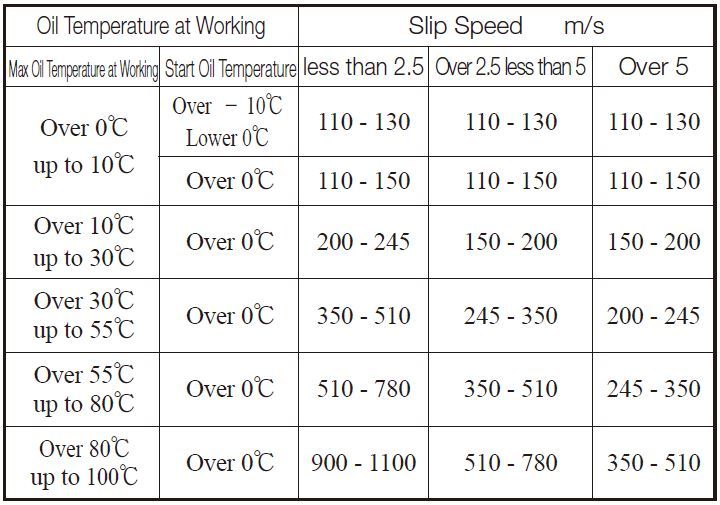
Table 13.9 Example of Worm Gear Oils

(4) Grease Lubrication
Greases are sorted into 7 categories and also segmented by kinds (Components and Properties) and by consistency numbers (Worked Penetration or Viscosity).
Table 13.10 indicates types of grease (4 categories). (Excerpt from JIS K 2220:2003 Lubricating greases).
Table 13.10 Grease Types
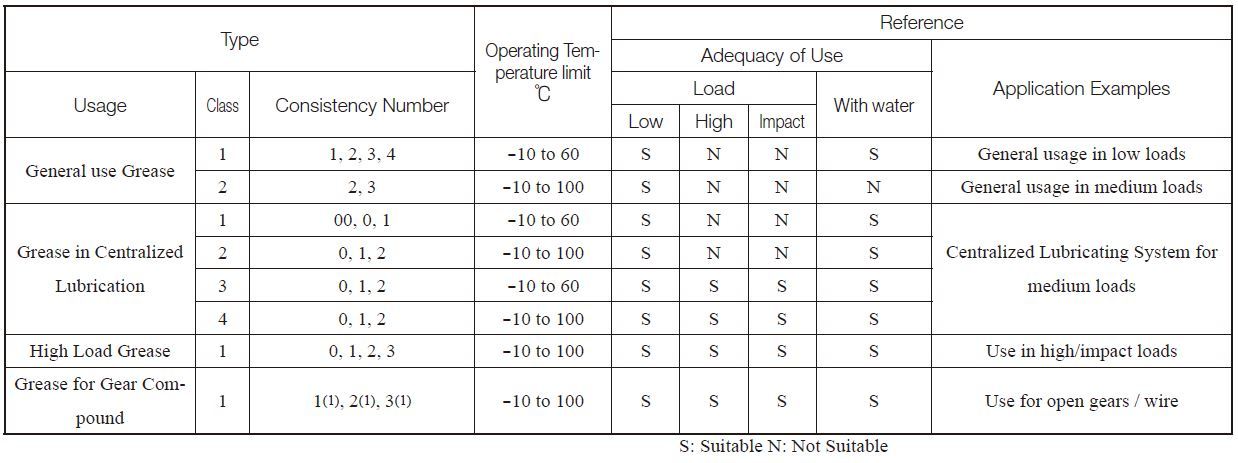
NOTE (1) Consistency numbers with (1) are classified by viscosity.
REMARKS
1. General use grease in Class 1 consists of base oil and calcium-soap and water-resistance.
2. General use grease in Class 2 consists of base oil and calcium-soap and heat-resistance.
Table 13.11 lists grease products from representative manufacturers.
Table 13.11 Greases
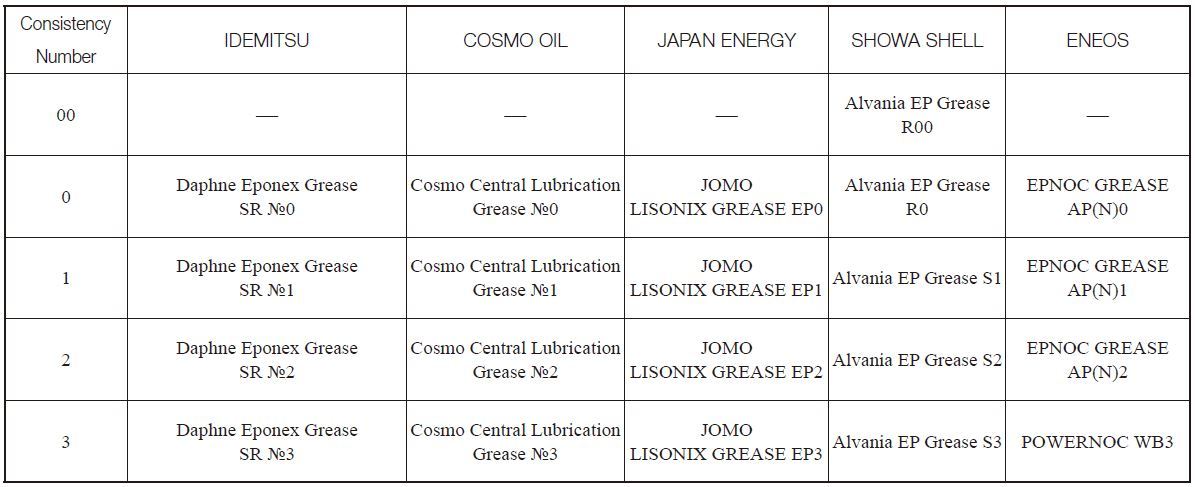
相关链接 - 齿轮的润滑



